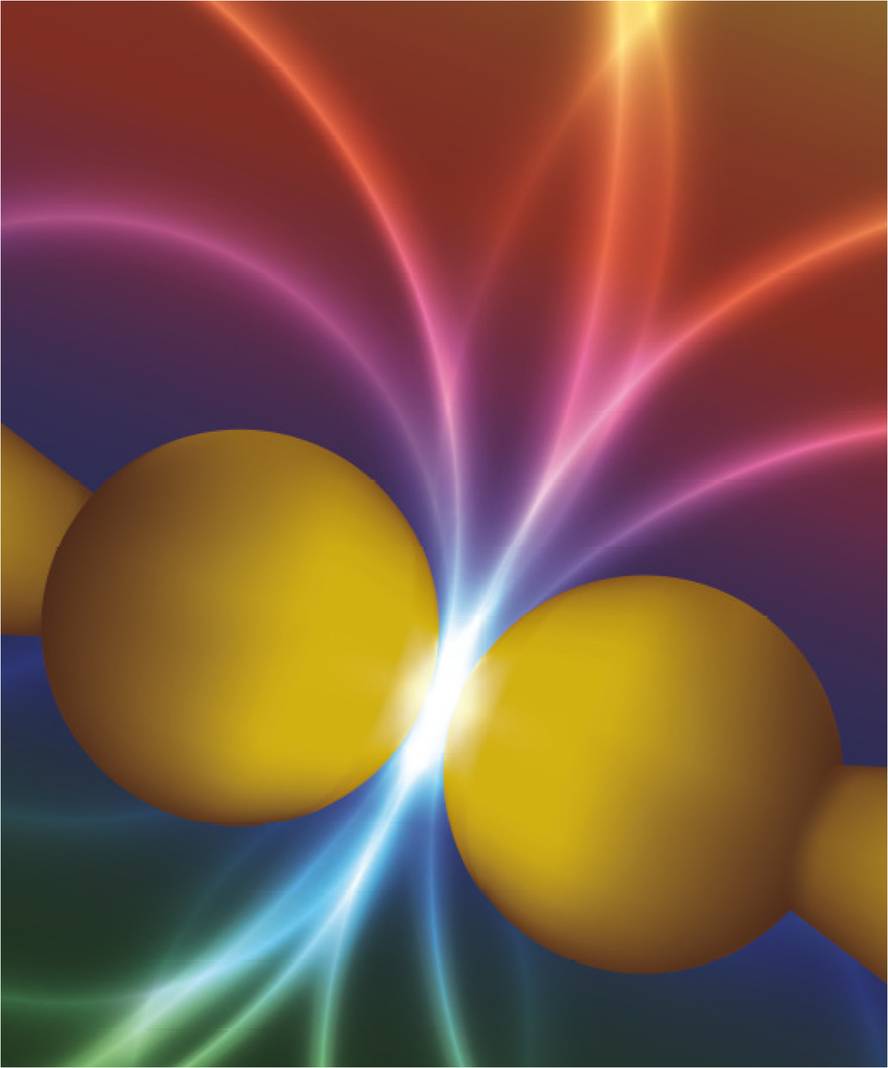Visible tunnel effect in color

One of the most known effects of quantum physics, the tunnel effect, has been quantified with great precision in a light experiment. An international team of physicists, including researchers from the DIPC and CFM centres in Gipuzkoa, has used the interaction between electrons and light to analyze the effect “from within” by combining optical and electrical methods.
--> Javier Aipzurua, one of the research leaders, on the television program Teknopolis "Gerturik"
--> Research explained by Aizpurua in the Norteko Ferrokarrilla program
The experiment was conducted with two nanoscopic gold spheres. As the spheres approach each other, the behavior of electrons on the surface varies. At first a link is created between the spheres that oscillate in a special way. The oscillation mode of each electron is known to physicists as plasmons. It is then that physicists have emitted white light into the space between the two spheres, where light is reddened by the effect of plasmons. Therefore, the presence of red light indicates the presence of plasmons. In short, the entire system behaves like an optical antenna.
But there is still no tunnel effect. For this, physicists have brought the spheres closer. When they are less than 0.35 nanometers (though contactless), electrons jump from one sphere to another. It is believed that it would be impossible for electrons to jump, since the spheres do not touch each other, since the electrical potential of the intermediate gap does not allow electrons to jump. But in practice it happens. It is the effect of a tunnel on potential.
In this experiment, when electrons jump from the sphere to the sphere, light changes color, from red to blue. This is due to the change in the distribution of electrical charges. The number of electrons in each sphere varies, so oscillations in the intermediate zone, plasmons, also change.
Researchers have called the experiment “quantum kiss” because the two spheres kiss each other, exchange electrons, when they are very close but without touching each other.
Physicists have combined optical and electrical methods to accurately measure the influence of the tunnel effect. As the spheres approach, the wavelengths of the light produced and the electric field of plasmon have been measured, which has allowed the details of the tunnel effect to be analyzed. Javier Aizpurua, researcher of the DIPC, wanted to emphasize that the experiment was carried out in the conditions that occur in an optical antenna, that is, at room temperature and pressure. The value of this research lies precisely in the creation of a very concrete model for electrooptical devices on what happens in the nanometer scale.





